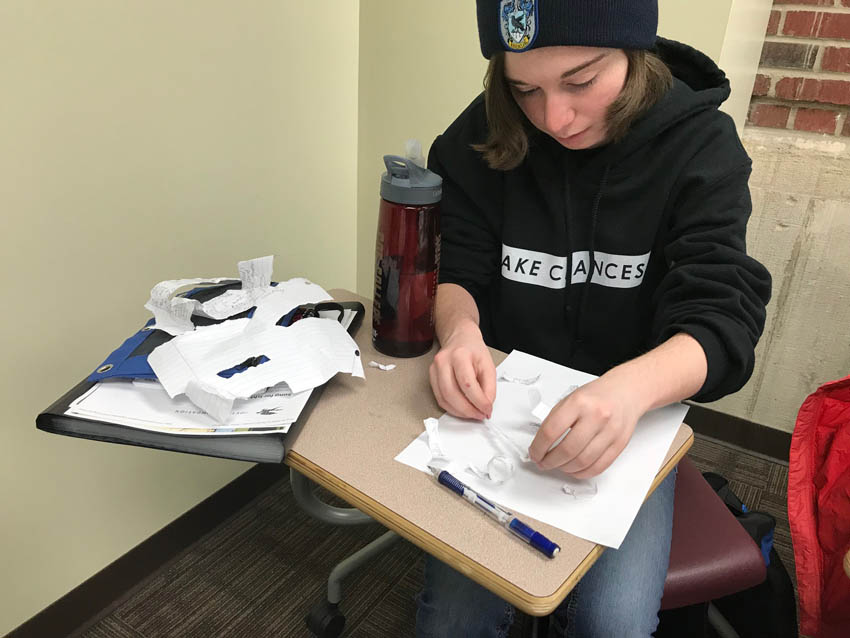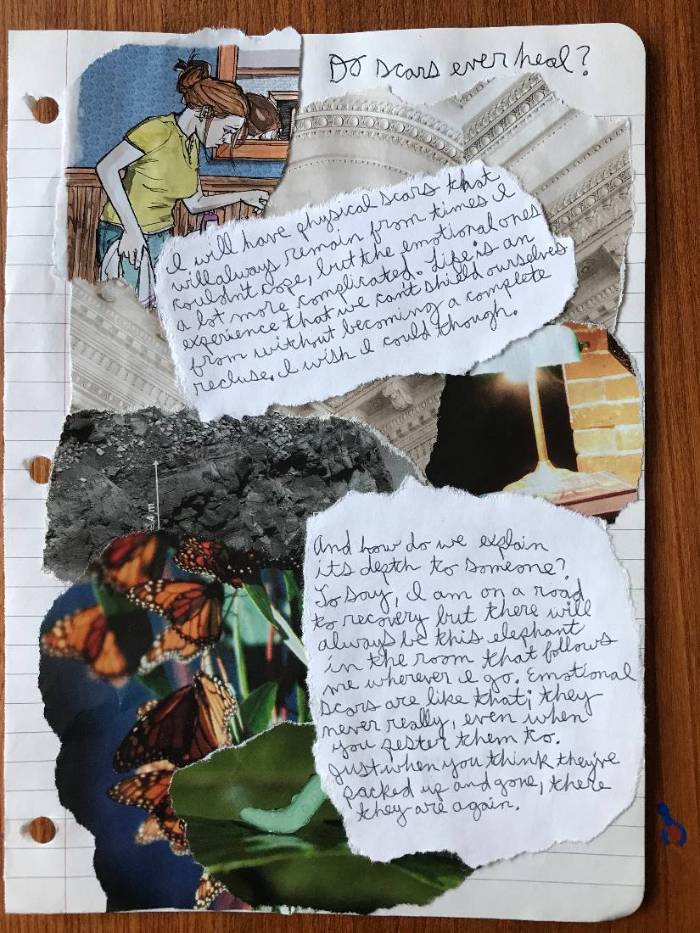Today we look at the art journals of Dan Eldon. Dan made his mixed media journals between the ages of 14 and 22. His collage, painting and storytelling embody a playful and a probing mood that young people may find familiar. Collage, his primary mode, feels initially very approachable, especially to teens who scrapbook, journal, doodle, or collect. For this prompt, I paraphrase information and ideas from two excellent books:
“The Journey is the Destination: The Journals of Dan Eldon,” edited by Kathy Eldon.
“Dan Eldon, The Art of Life,” by Jennifer New.
A Brief Bio:
Dan Eldon was a photo journalist and collage artist who died at the age of 22 while documenting the famine in Somalia. He left behind an esteemed collection of art journals. Dan spent part of his childhood in Cedar Rapids and part in Nairobi, where he found beauty in the culture’s practice of repurposing left overs. He watched people with few resources create beautiful compositions out of discarded objects: bottle caps woven in to clothing, or old tires made into shoe soles. He saw how collage could be a way of life. Dan also believed he couldn’t draw properly. Often, rather than making realistic images, he composed with objects (feathers, snake skins, ticket stubs). Anything with the right texture, shape or color could go into his art journals.
He started his first journal at 14. He sketched, collaged and wrote about his adventures as a teenager, inventing alter egos and madcap adventures for his friends. Later, after his parents divorced, and he became interested in racial injustices of apartheid, he asked more probing questions. He used his journals to explore questions such as: “What is the nature of war?” or “What drives people to betray one another?” He also asked questions about artistic process and how it relates to day-to-day living. On one journal page he writes the question “What is the difference between exploring and being lost?” Under the question, in a different ink, he writes “The journey is the destination.”
Questions for the class:
How would you answer the question, ‘What is the difference between exploring and being lost?’ What do you make of Dan’s answer? How might the journey be the destination? Does this make sense in relation to your life, or to your writing?
I suggest that journey-as-destination is an idea that seems very appropriate to the way in which Dan Eldon put his journals together. It seems he was more interested in process, than in the product, or coming out with a perfectly composed page. He seemed more interested in being in the process of creating. His journals show how he liked revising, adding on, piling images on top of one another to add texture, and then rubbing parts of the top images away. Dan seemed unafraid of making a mess, or messing up. He found that messing up and tearing an image away often improved the composition.
Through Dan Eldon’s example I encourage students to enjoy the process: jump right in, work quickly, revise, make a mess, tear, layer, reinvent mistakes.
 Exercise for Dan Eldon style journal entry:
Exercise for Dan Eldon style journal entry:
Tear out a sheet from your writing journal. Write down a question. This might be a question you think about often, or just a passing curiosity. The question doesn’t have to be grand so long as it’s something you’re interested in exploring today. The question can be personal. Sharing is optional.
Now write down the thoughts that come from this question. Free write: don’t worry about connecting all your ideas or following a logical order. Just keep your pencil moving. Go where the words want you to go. Explore. Write for 10 minutes.
After ten minutes, re-read what you’ve written. Take a pair of scissors, go back and cut out the lines you like most. Lay them out on a fresh journal page. Use them as elements in a visual and written composition. Start to draw or search for images to cut and paste onto the page. What images do these lines evoke? Draw in and around the words, or cut and paste in images. Add swaths of color or geometric designs. The images you add don’t need to match or illustrate your words.
Remember our exercise on metaphor – it’s often the unexpected juxtapositions that start to tell the most interesting stories. Sometimes it’s exciting to find images that contradict your words, introduce a counterpoint, or new dimension. Sometimes the images and words will start up a conversation. Alternate between writing, drawing doodling, cutting and pasting until you have filled an entire page.
Questions for discussion as students move round-robin style and present pieces in class:
How did it feel to give yourself over to the journey, to not plan?
Were you able to turn any “mistakes” into successes?
Did you encounter any happy accidents?
Did you gain insight into your initial question?
How did it feel to switch between modes of expression (writing and image making)?


